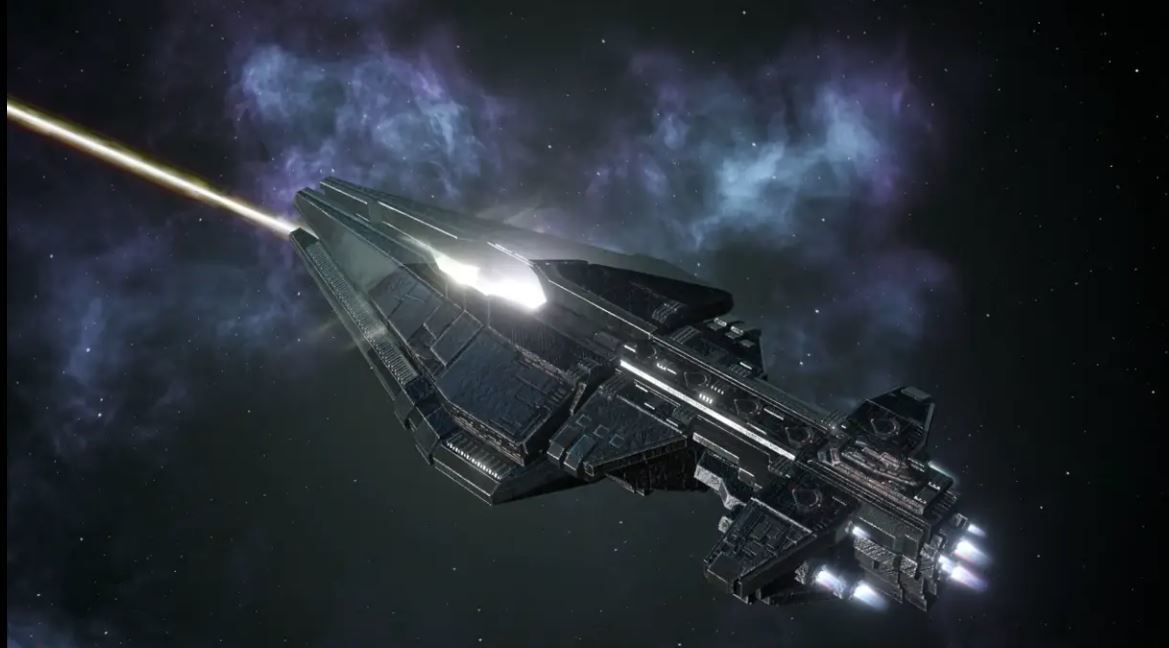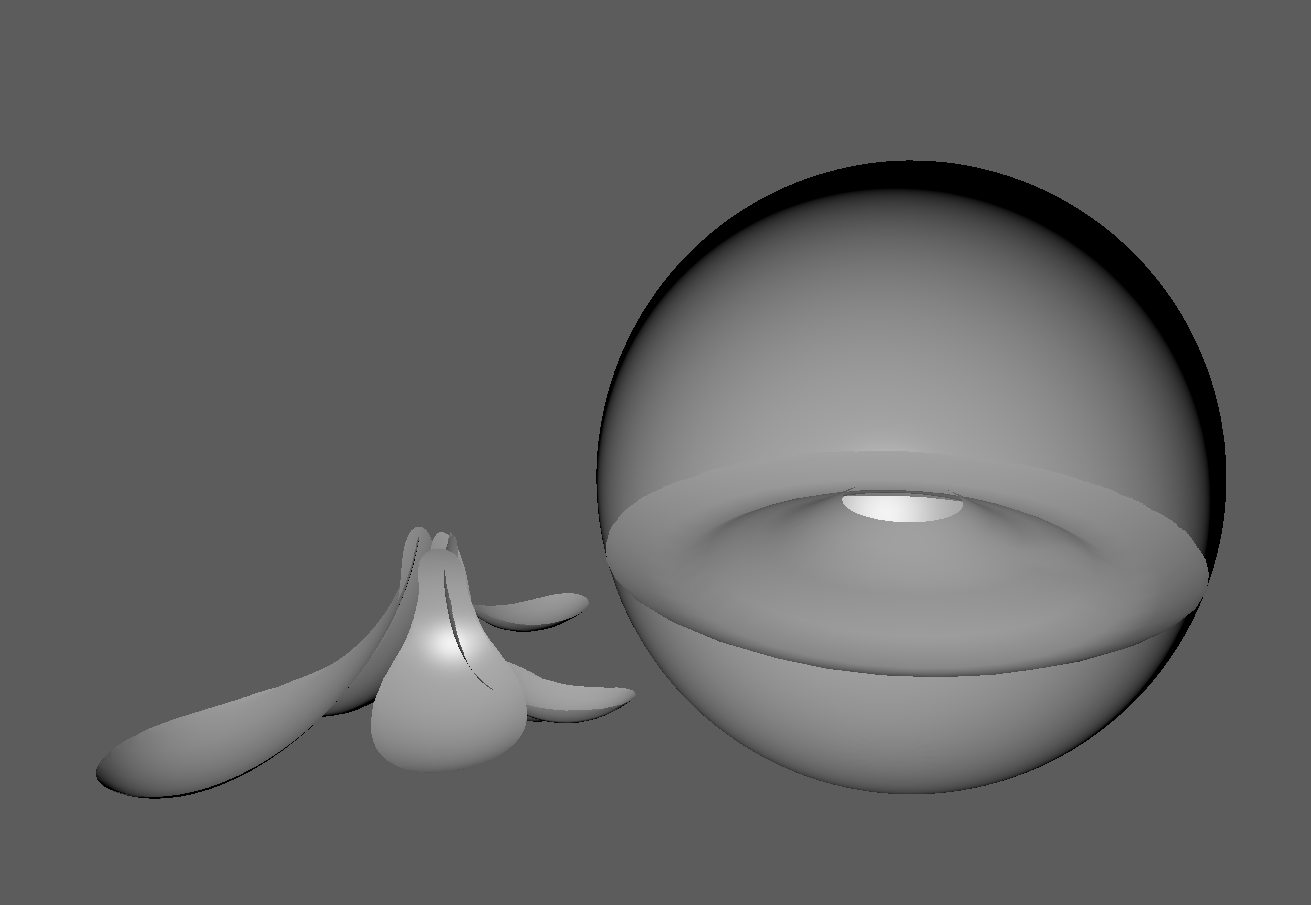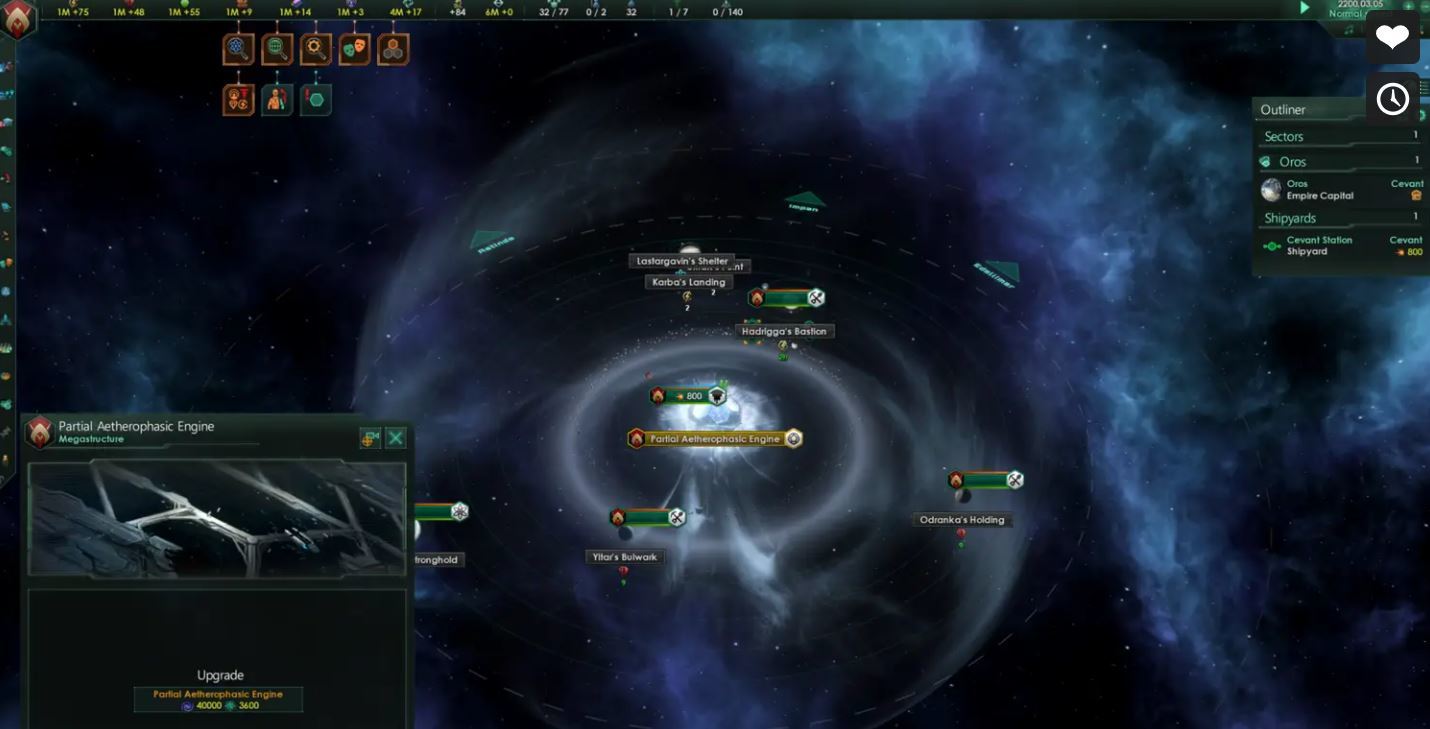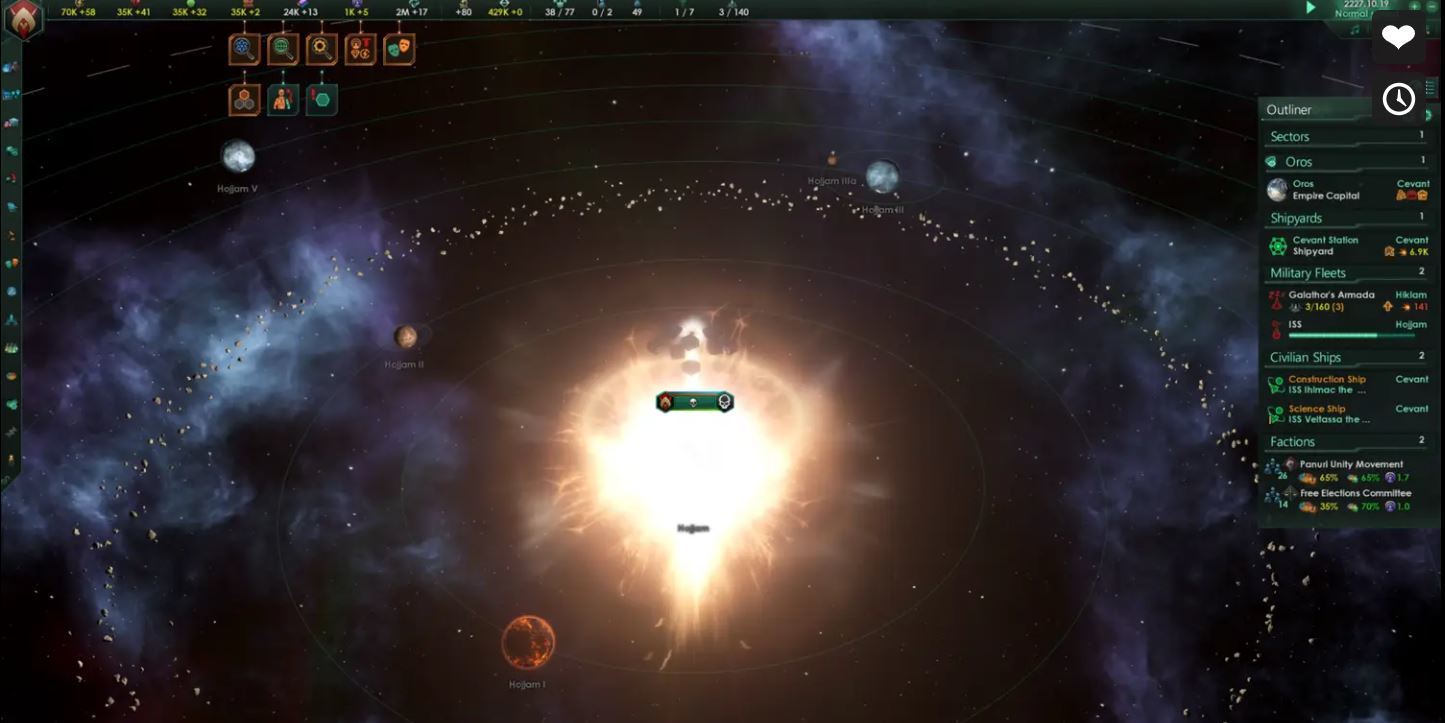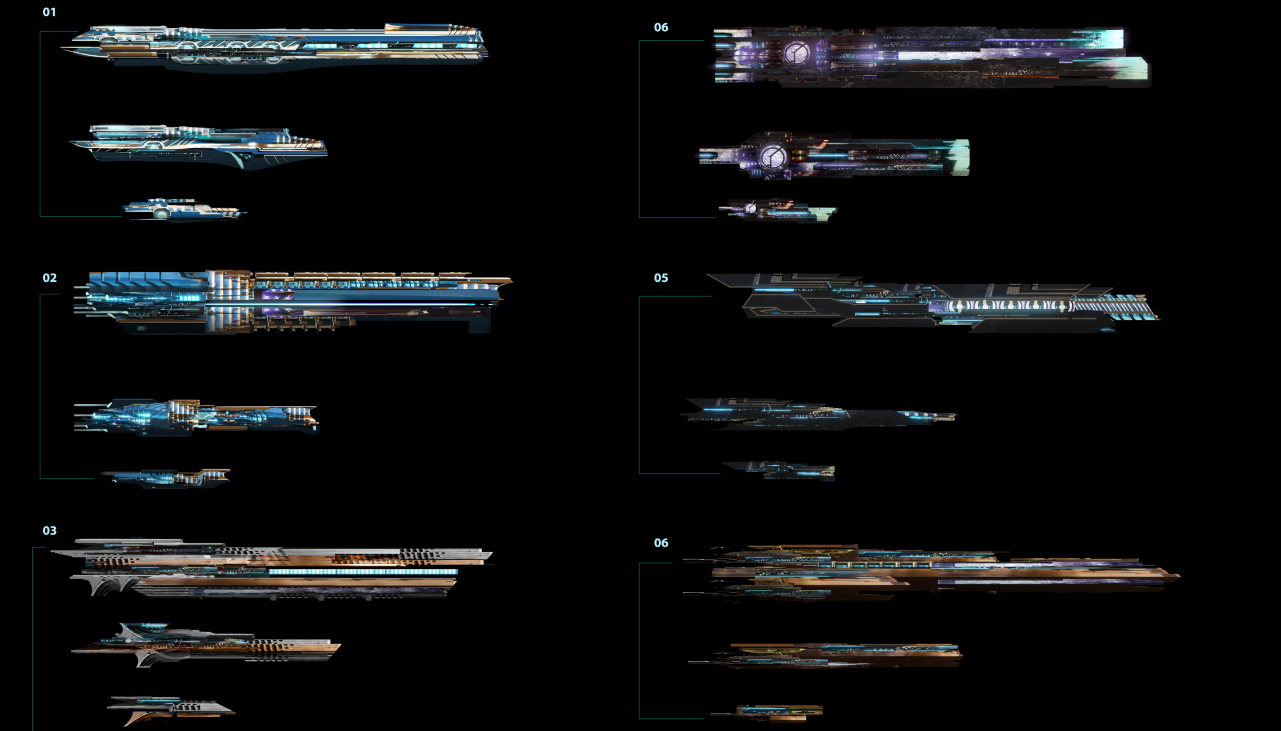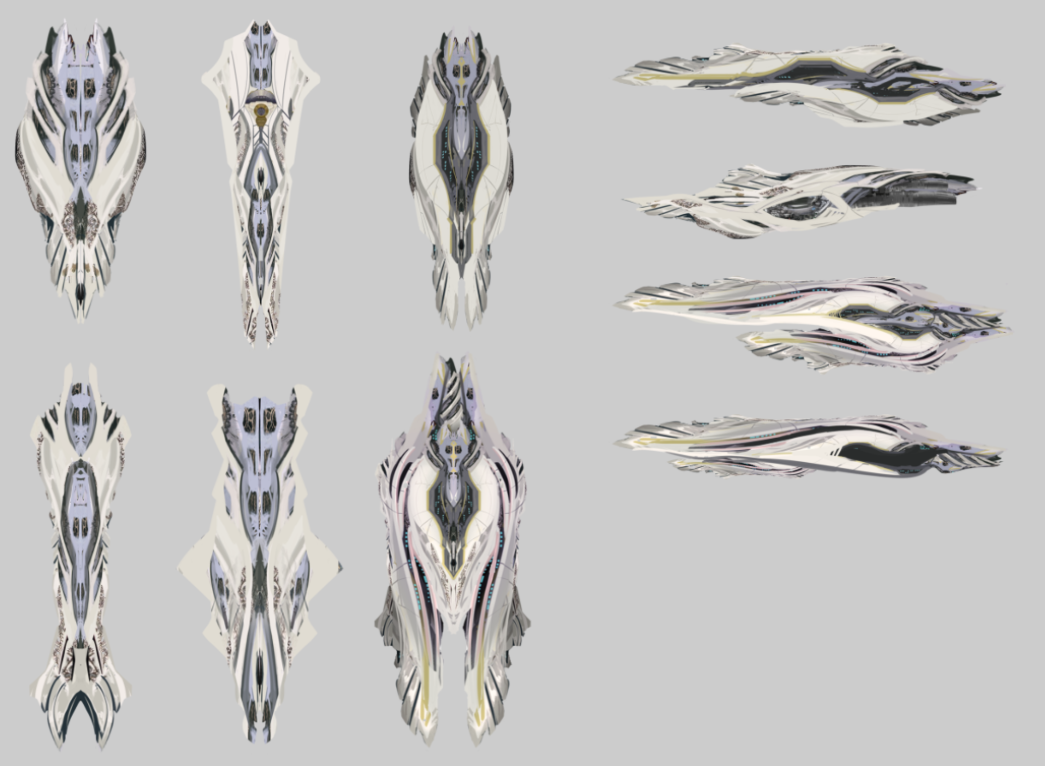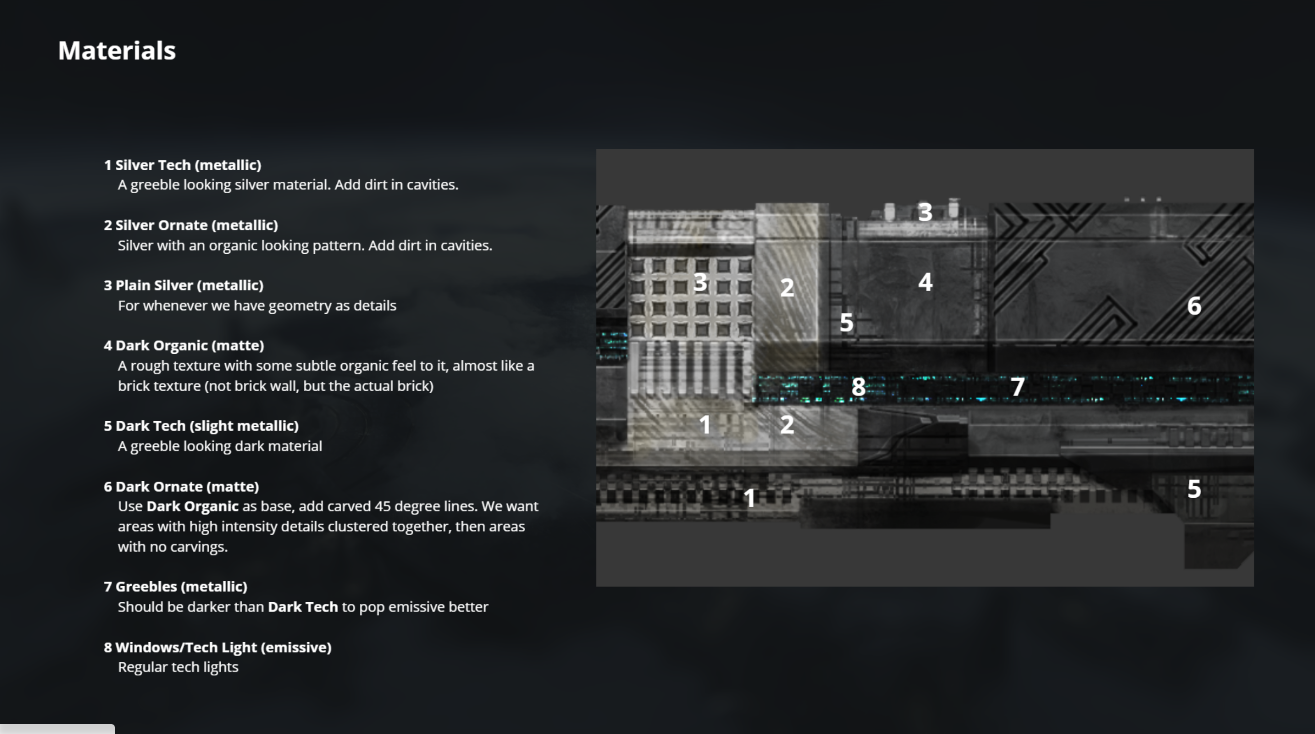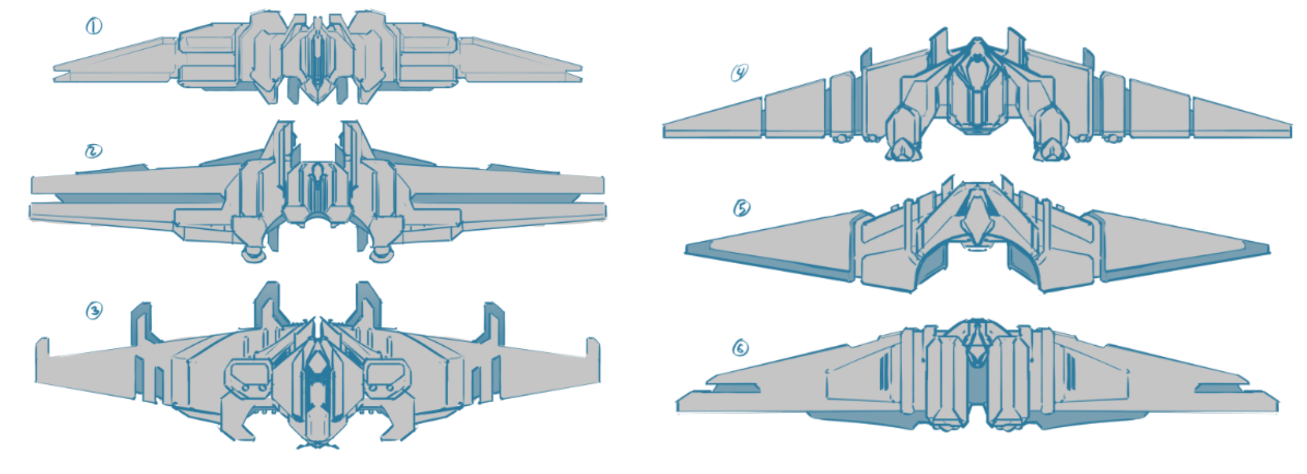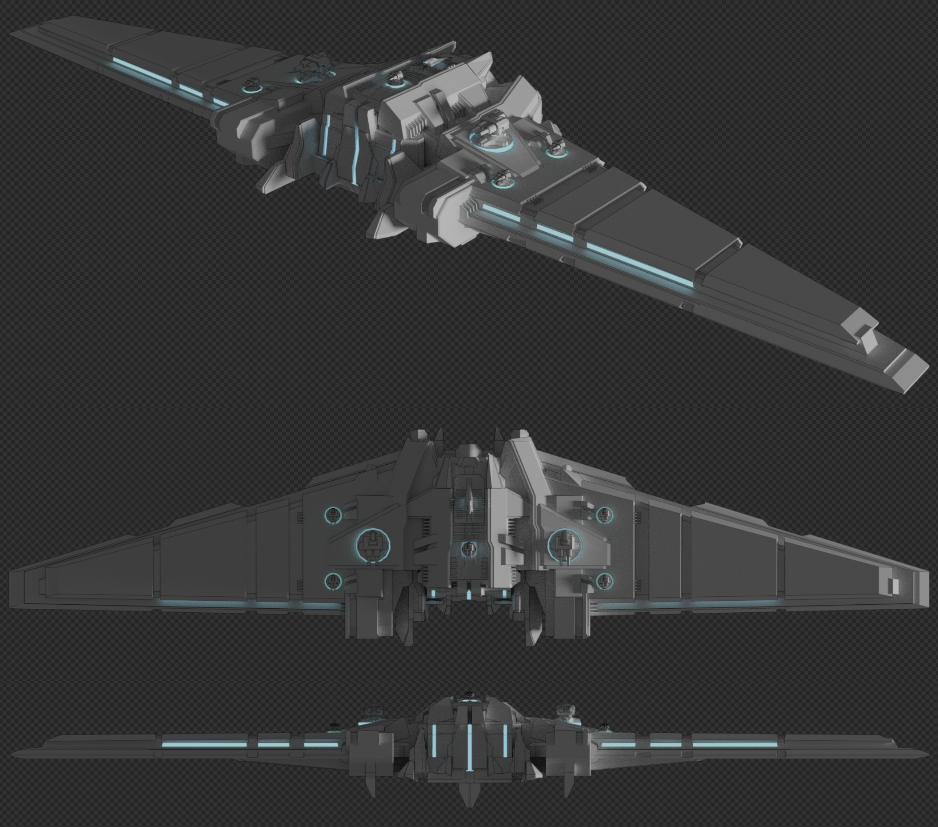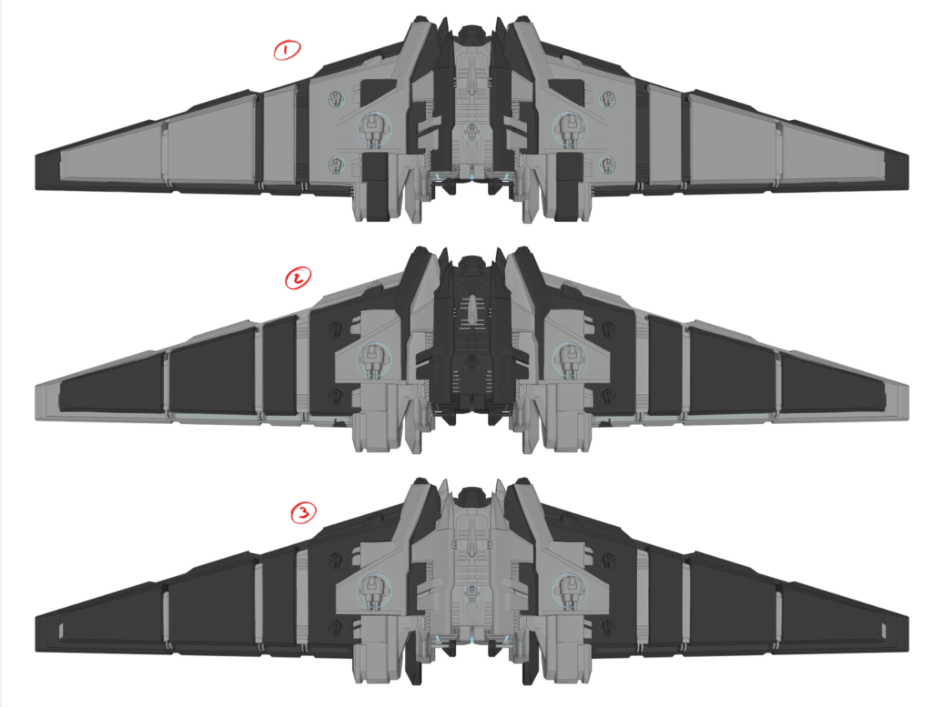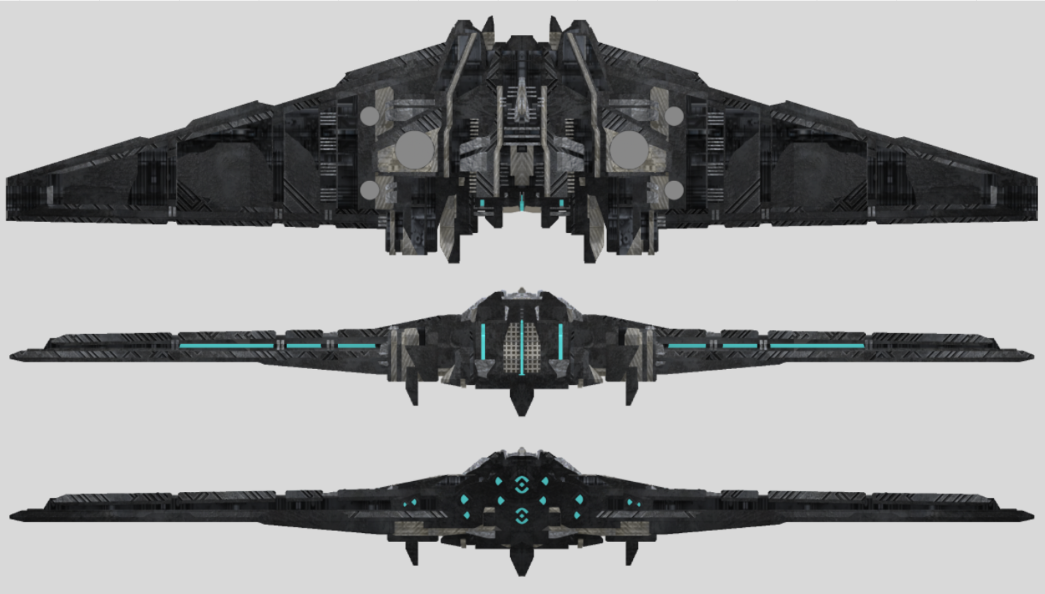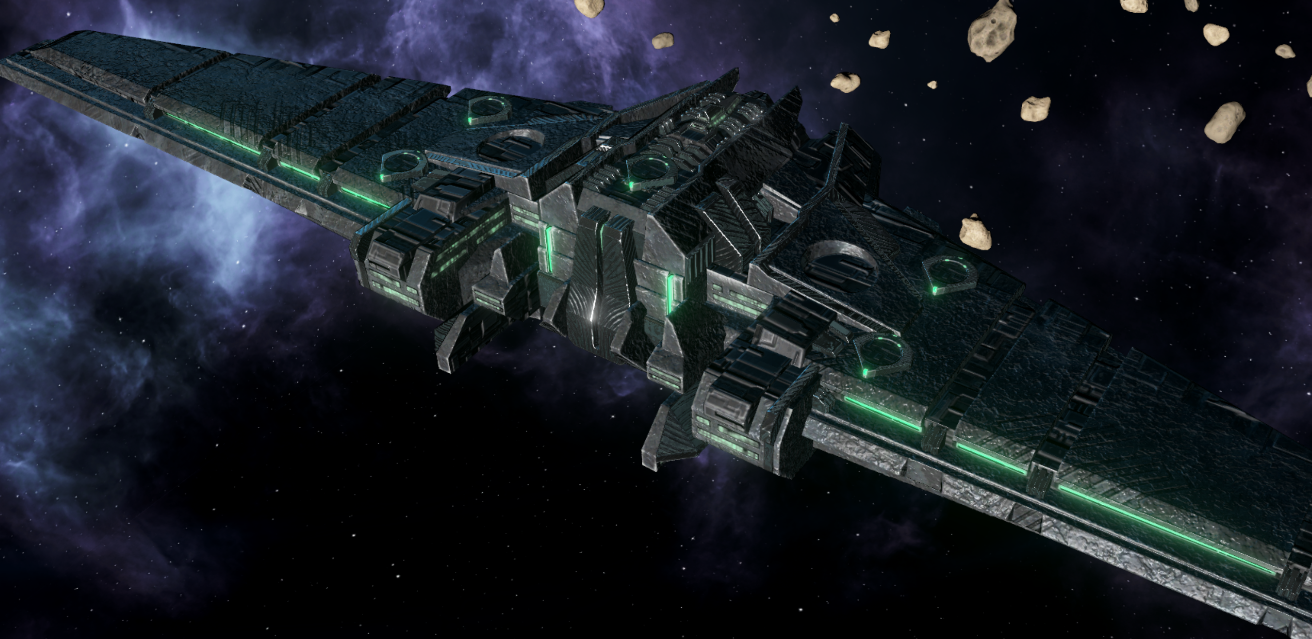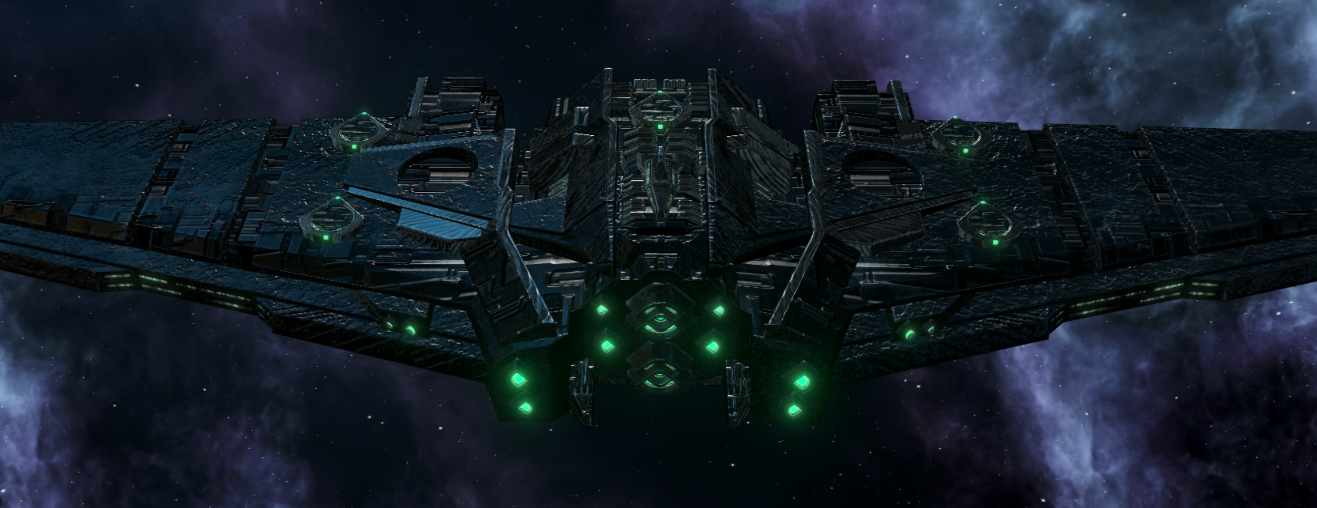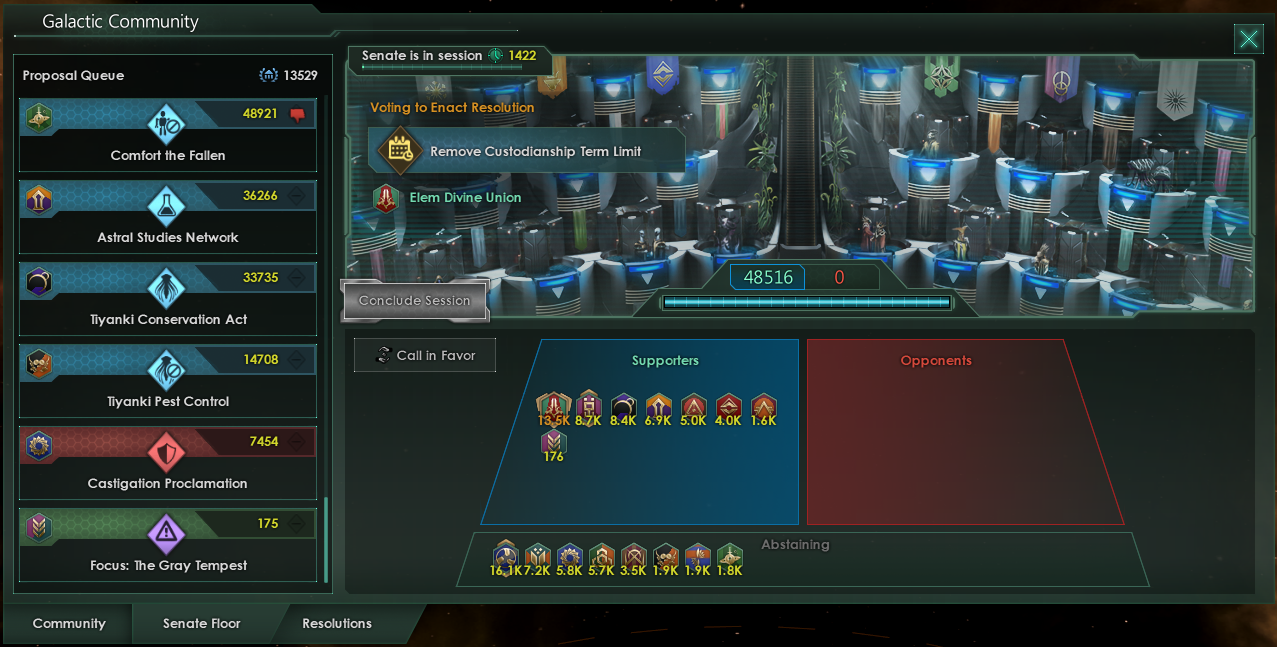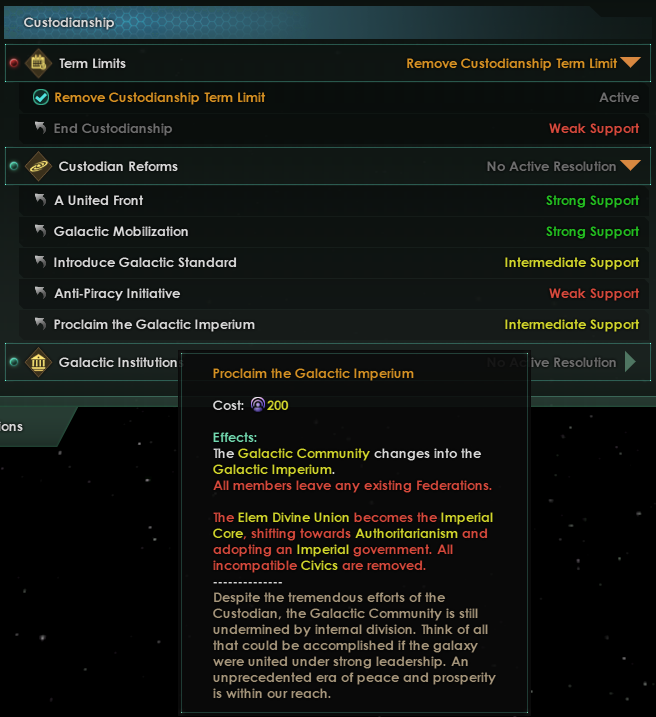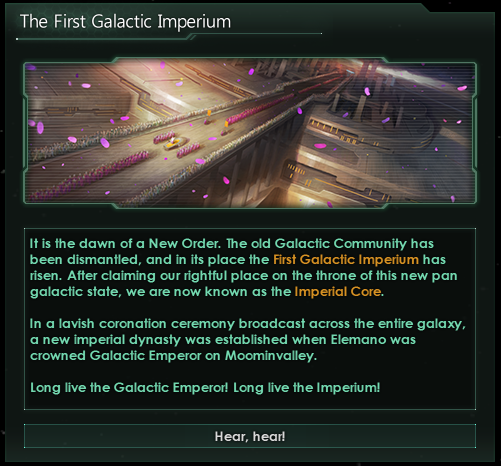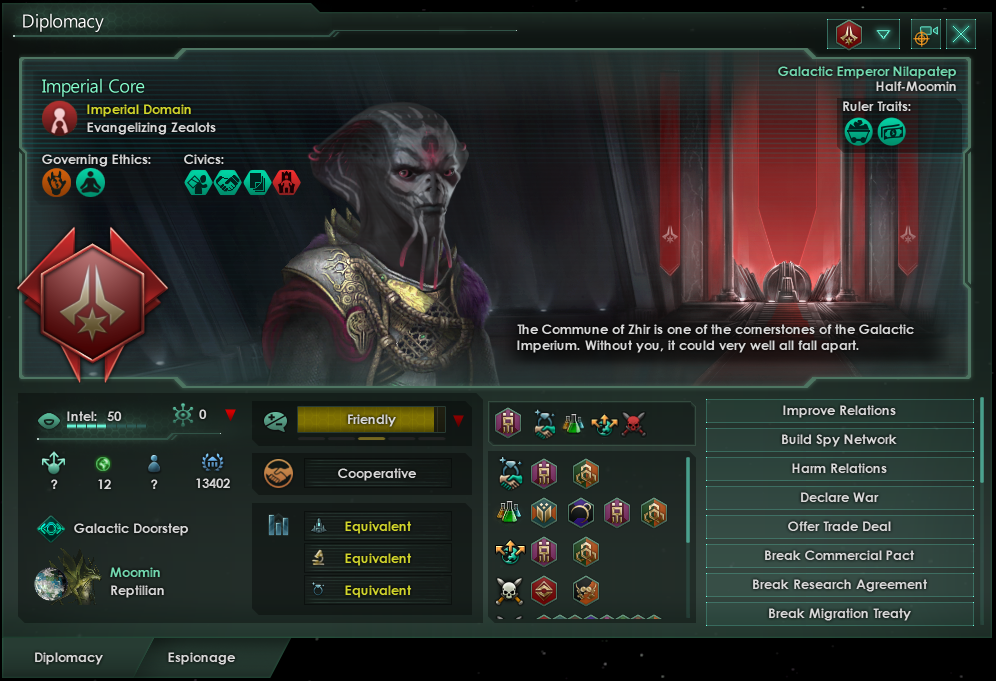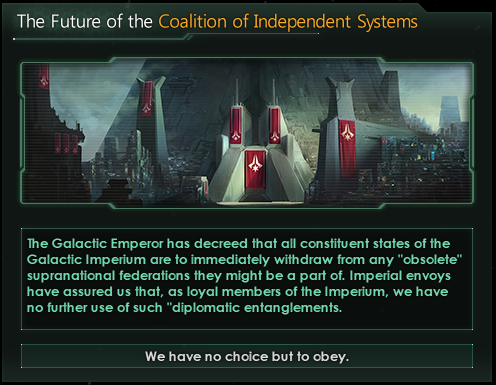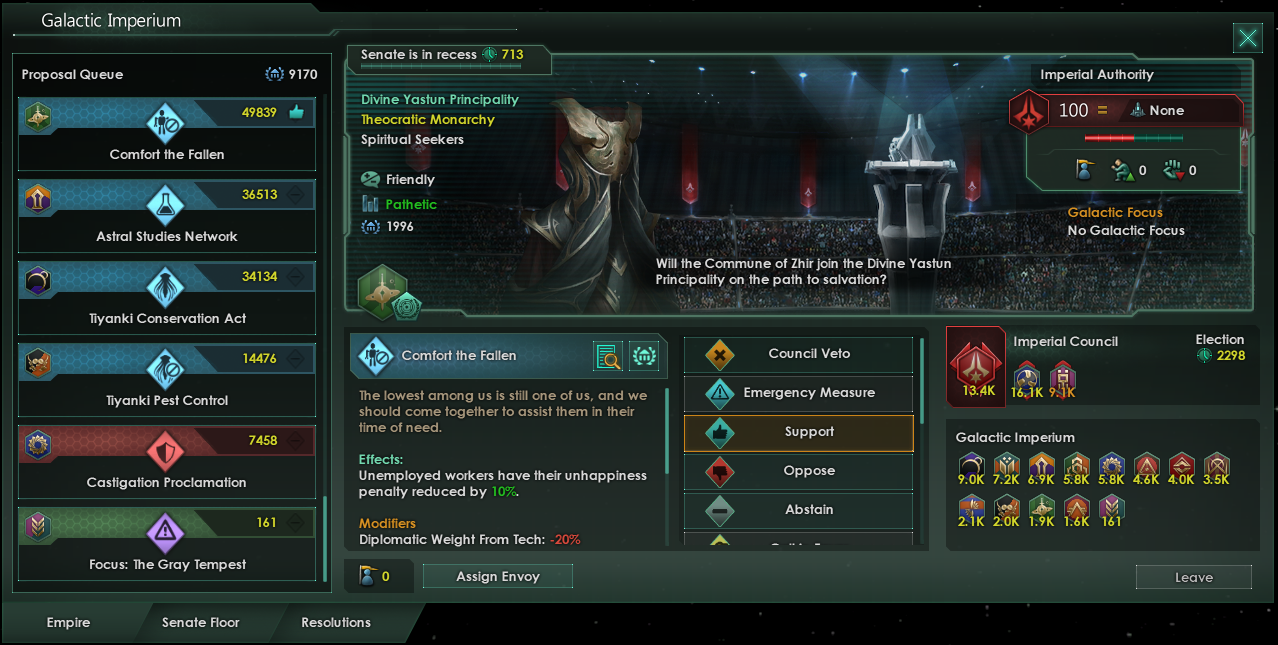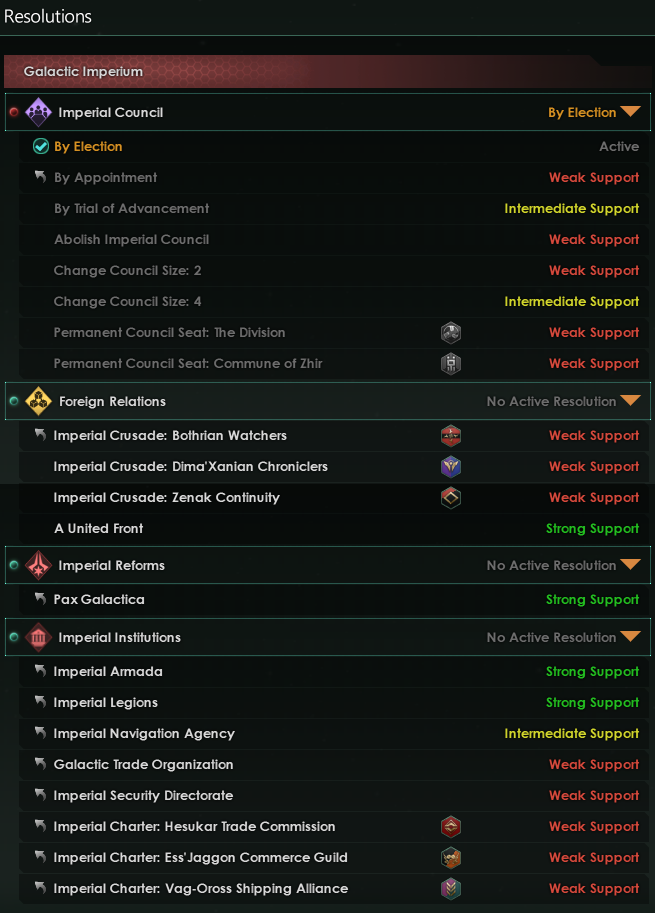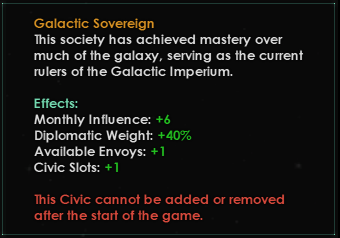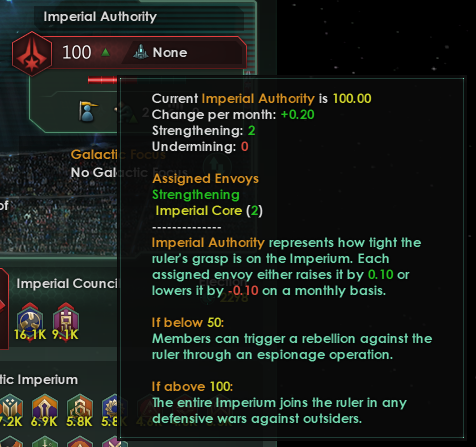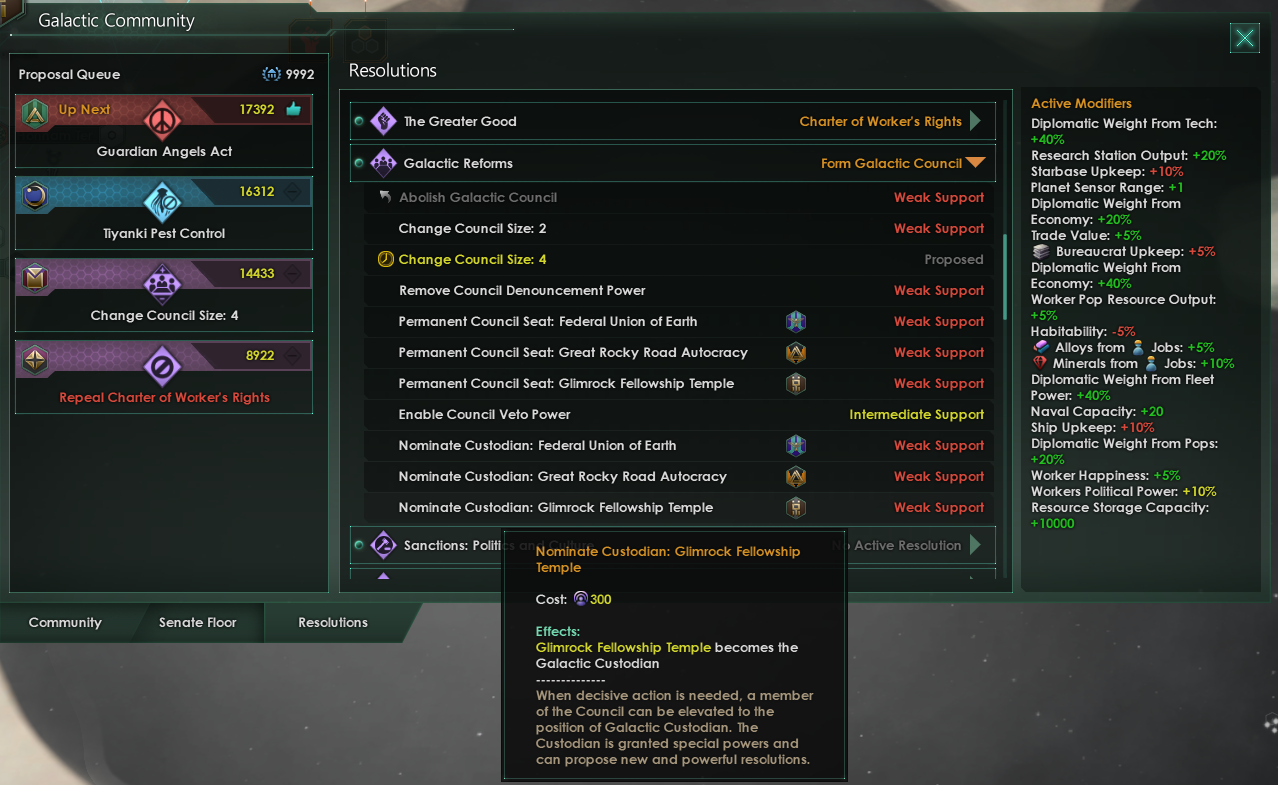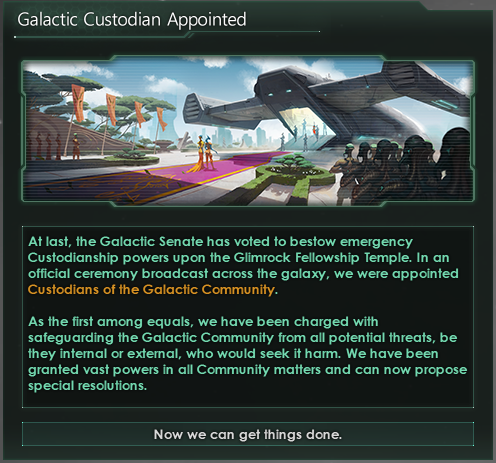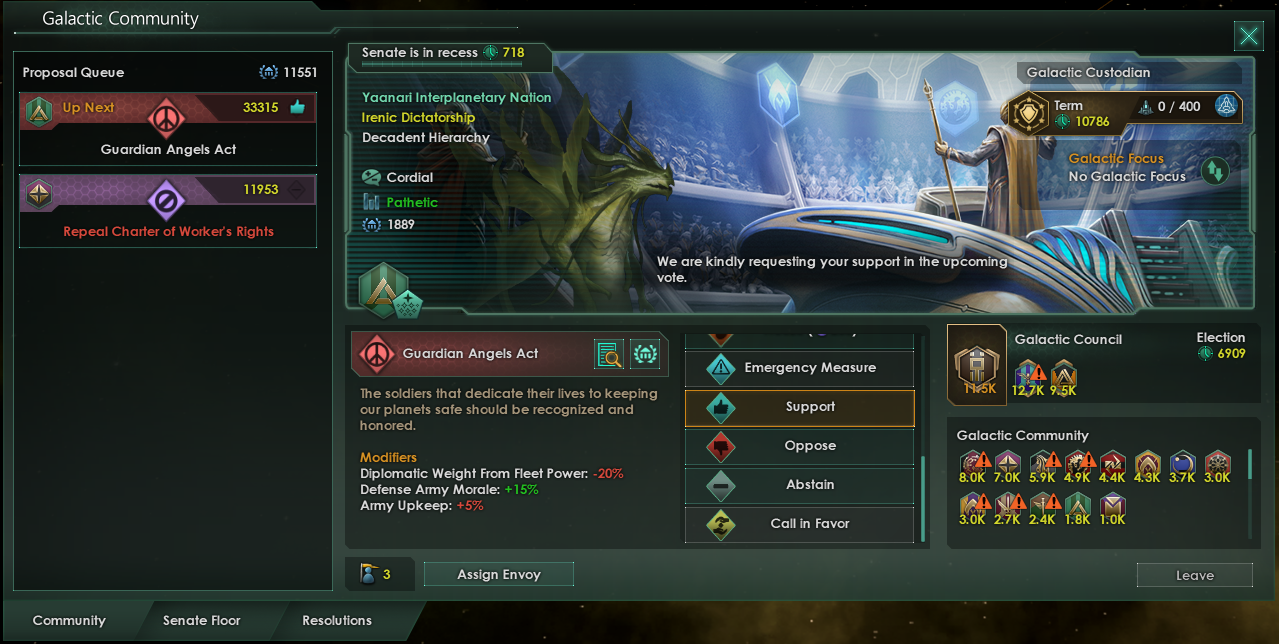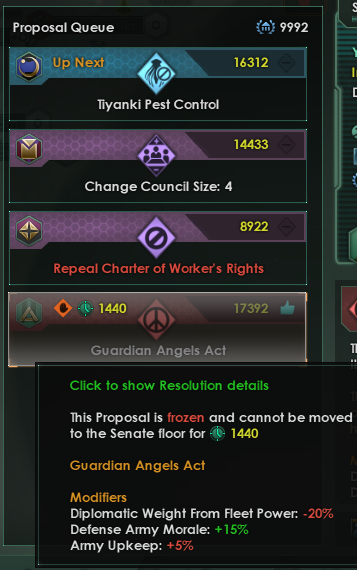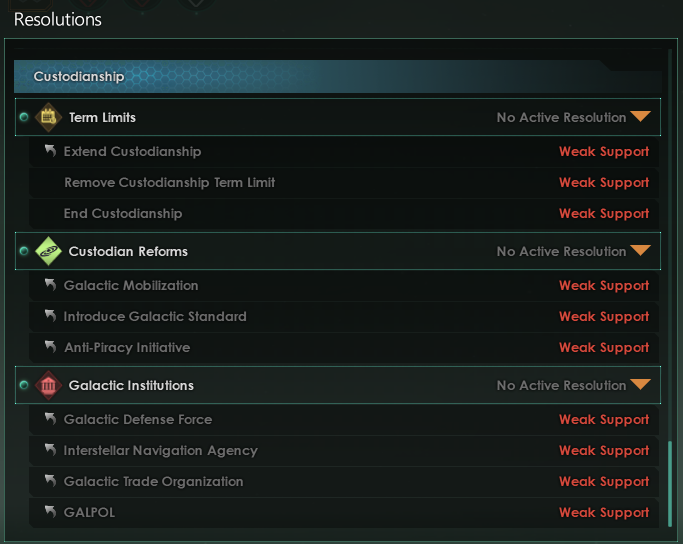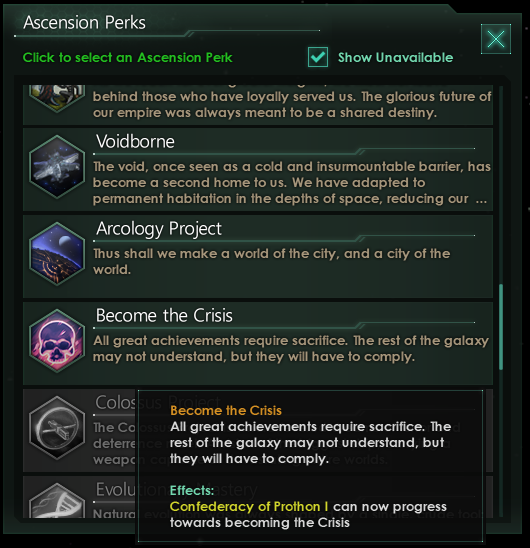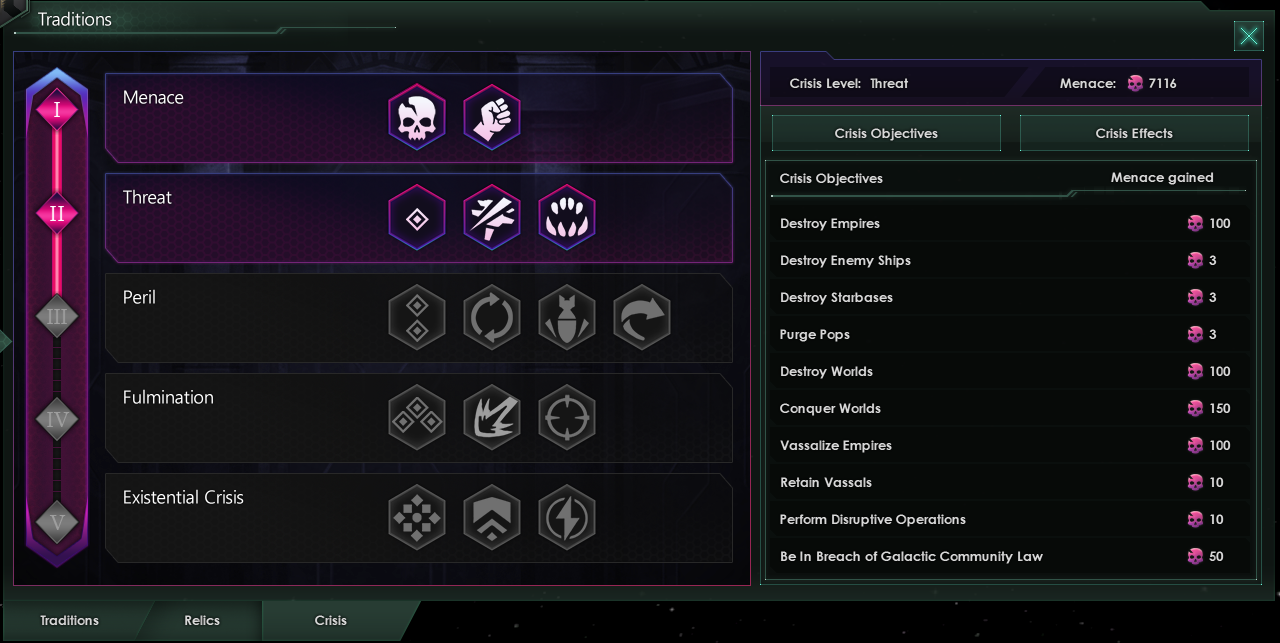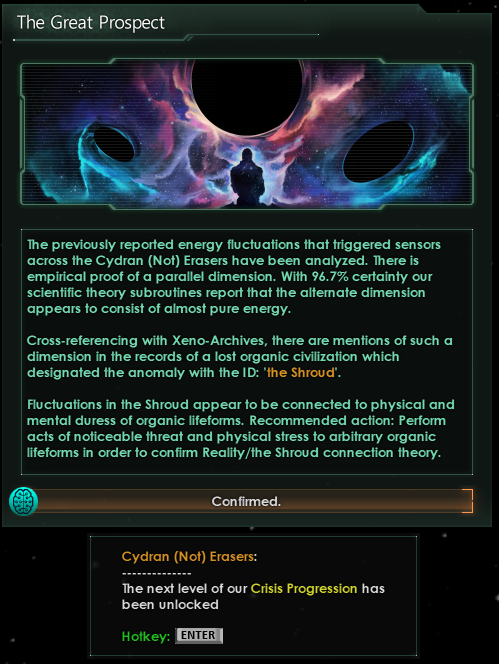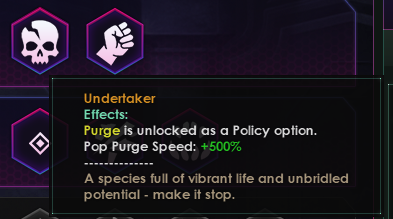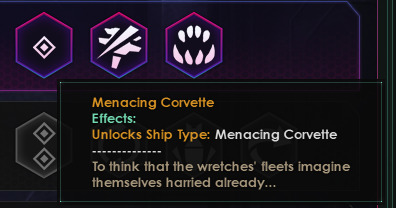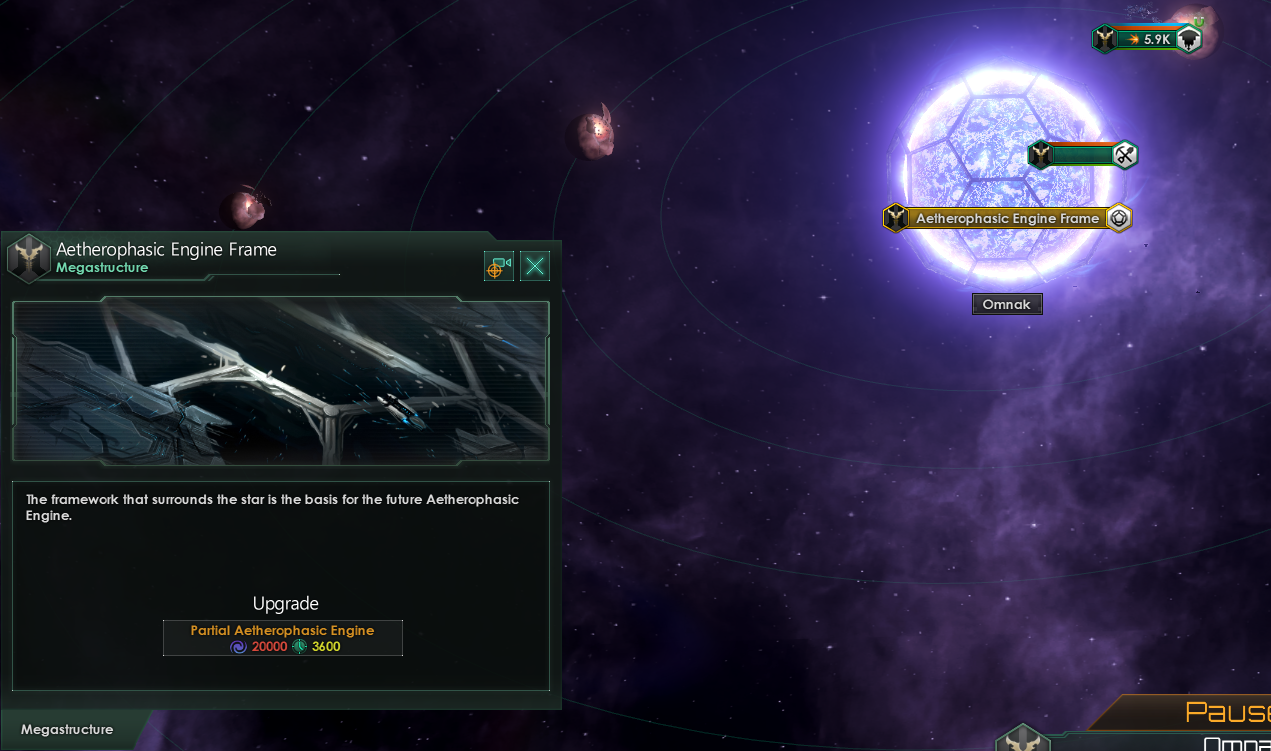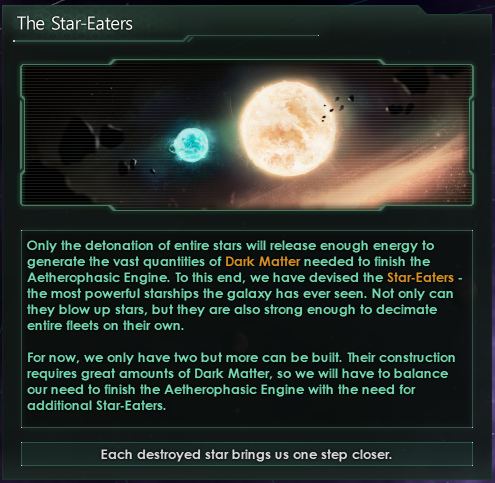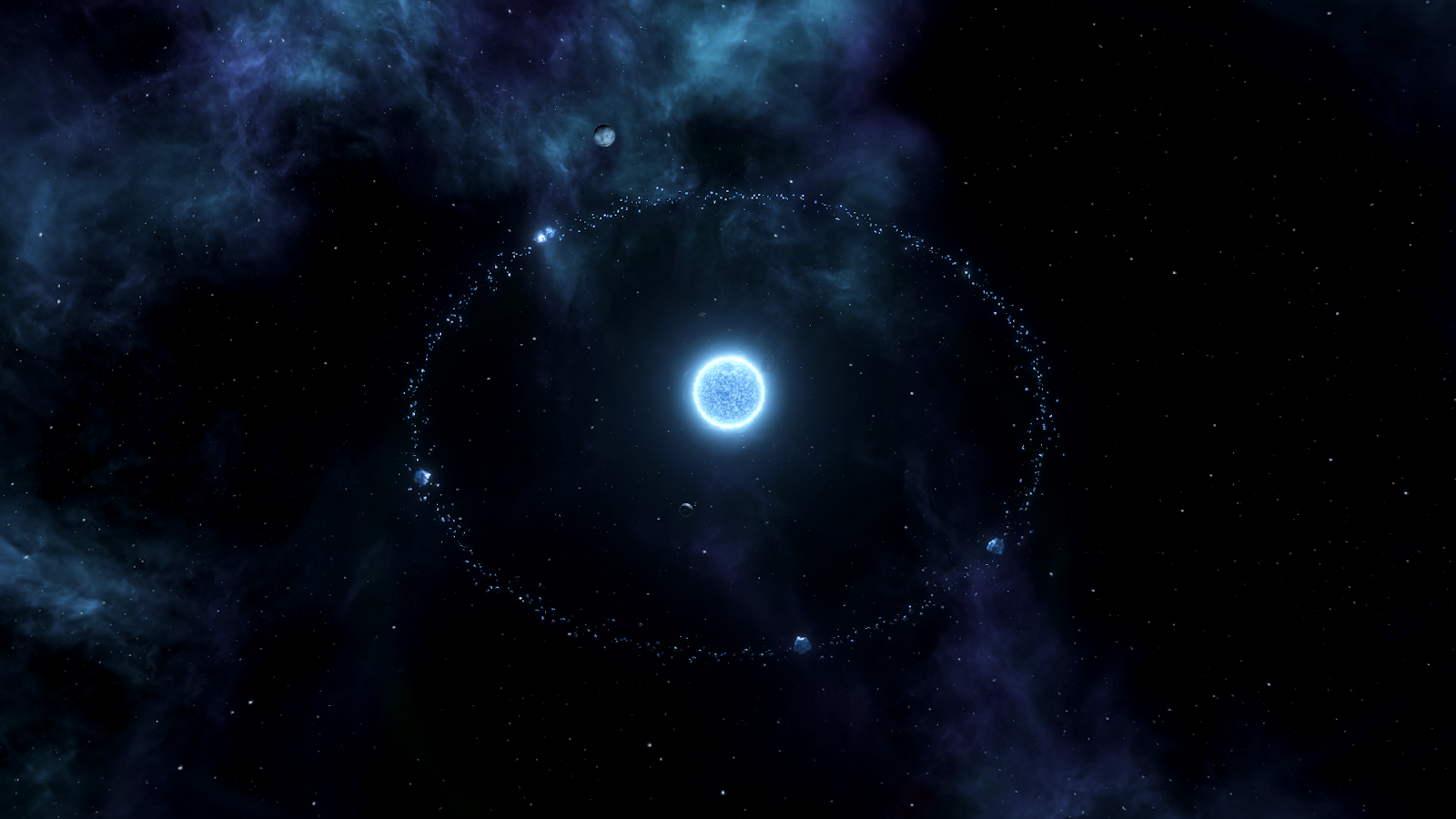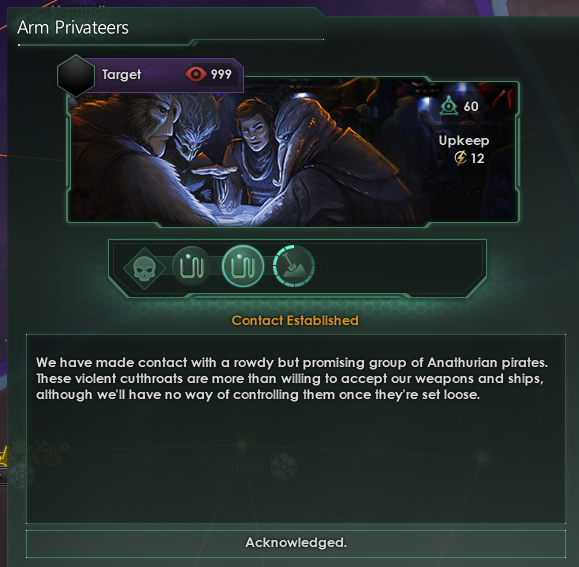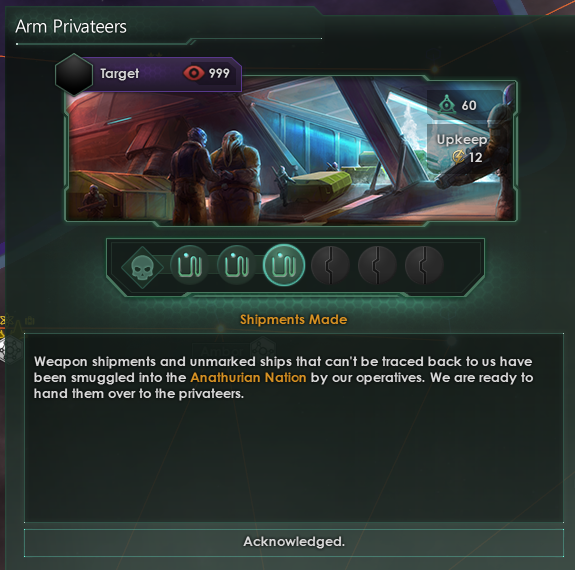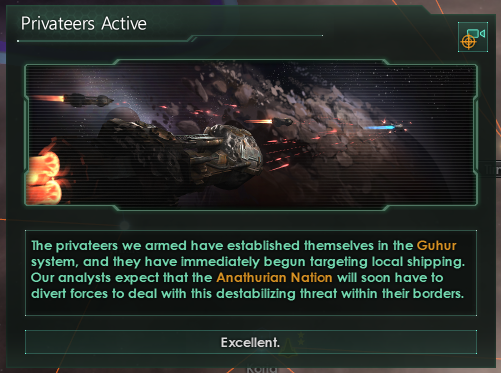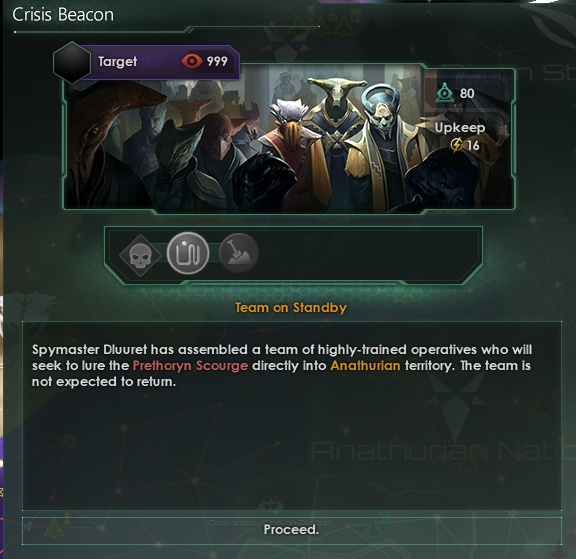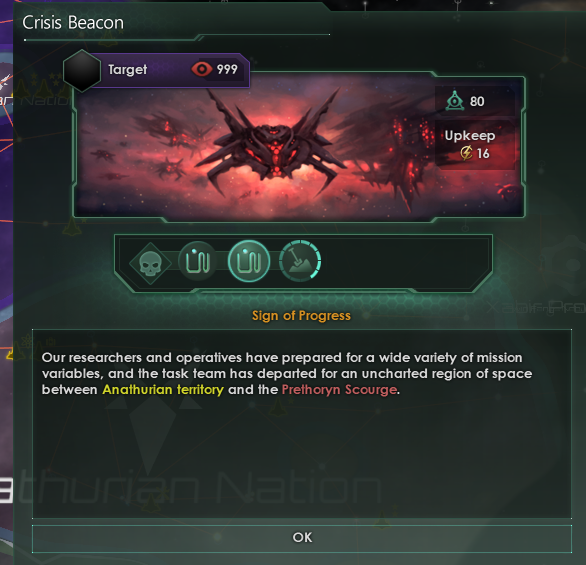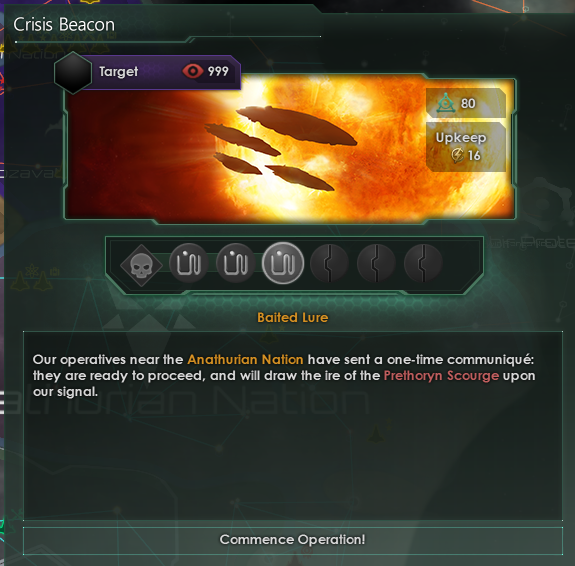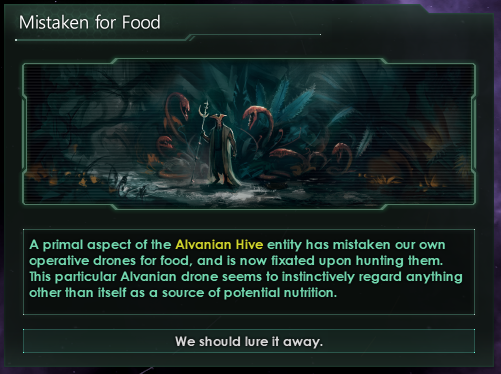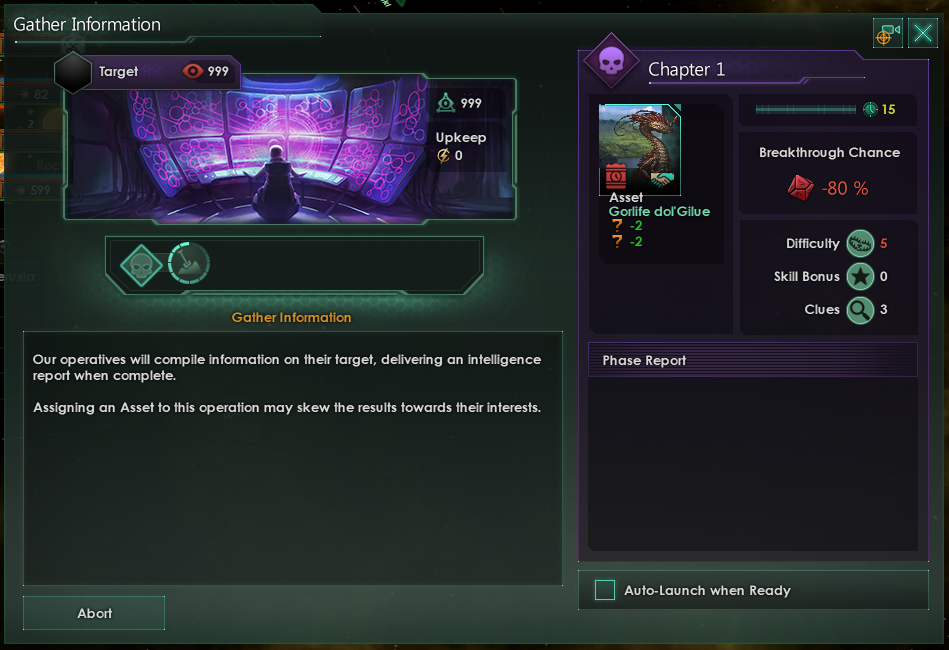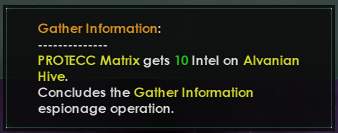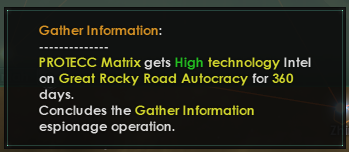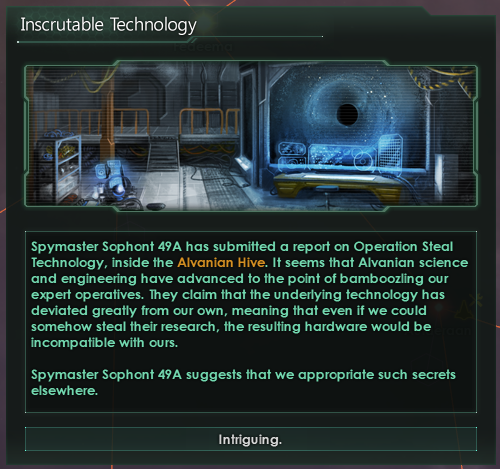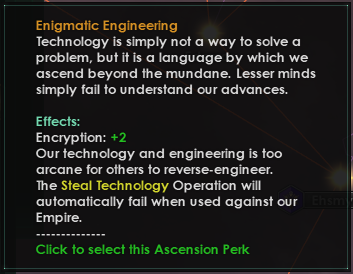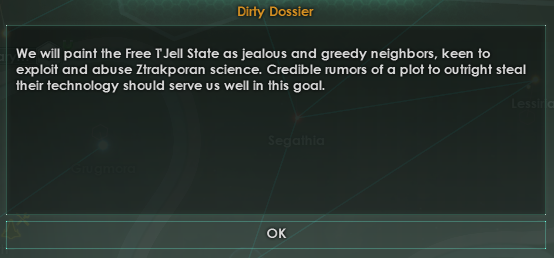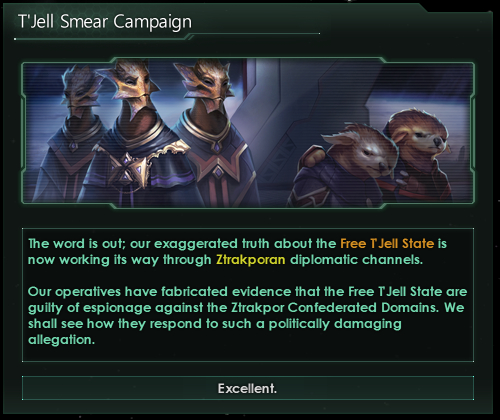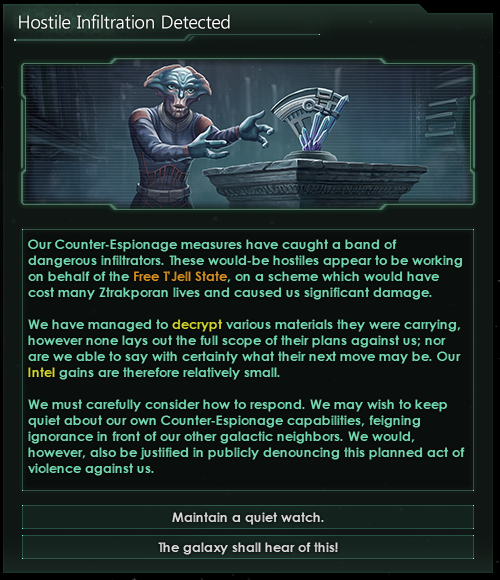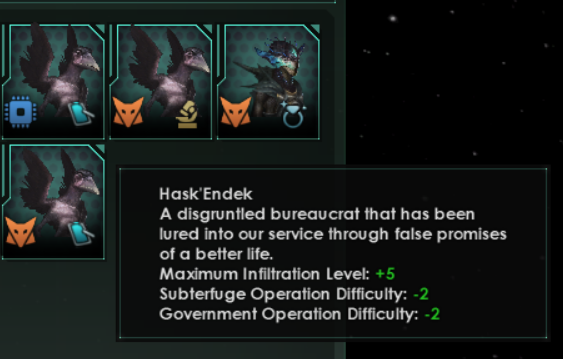
Stellaris - ann-charlotte.mork
Hello everyone!
I hope the word about the release date for Nemesis has already reached you, but in case it has somewhat eluded your perception, here is a refresher:
Nemesis will release on April 15th, and here is the second story trailer:
https://www.youtube.com/watch?v=o86MFZPb_WI
As per usual, our expansions are released together with a significant free update, and this time is no different!
We’re happy to announce that Nemesis will release together with the 3.0 ‘Dick’ Update on April 15th! The update is of course named after author Philip K. Dick, famous for works which inspired, among other things, movies like Blade Runner and Total Recall (which also happens to be one of my favorite movies!).
Why 3.0?
We felt that the changes introduced with the new Intel system and the reworked First Contact system has enough impact on how different the game feels to warrant the change. Early- and mid game feel quite different now, in a very positive manner. Alien empires feel so much more mysterious, and charting the entire galaxy is no longer so easy. Changes like the pop growth system and the addition of industrial districts also felt impactful enough to want us to make the change.
Going forwards, we’re also gearing up to be able to be a bit more agile and deliver updates to the game a bit more frequently. I don’t want to make any grand promises quite yet, but 2021 is looking to be a very good year for Stellaris!
3.0 ‘Dick’ Features:
Espionage Update
The Espionage system has undergone some changes since the Dev Diaries that previewed them. Based on playtesting and qualitative feedback, we simplified a few of the systems that seemed to be adding unnecessary complexity or were difficult or awkward to understand. The way Encryption, Decryption, and Counter-Espionage all interacted were one of these points of frequent confusion, so we decided to scrap Counter-Espionage entirely, renamed Decryption to Codebreaking, and apply standardized rules when using them:
Encryption is always used as "Espionage Defense"
Codebreaking is always used as "Espionage Offense"
In earlier iterations, which modifier was being referenced varied based on the exact circumstances, which muddled the stats a bit and made it difficult to tell which one would help you more when you're attempting to infiltrate an empire. We renamed Decryption in order to further reduce confusion. Relative Encryption is used often in the system, and will now always compare the "offensive" Empire's Codebreaking with the "defending" Empire's Encryption.
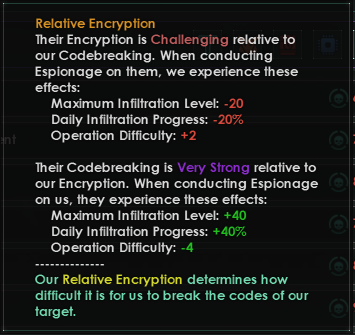
Relative Encryption tooltip. In this example, our Codebreaking is lower than their Encryption and their Codebreaking is higher than our Encryption.
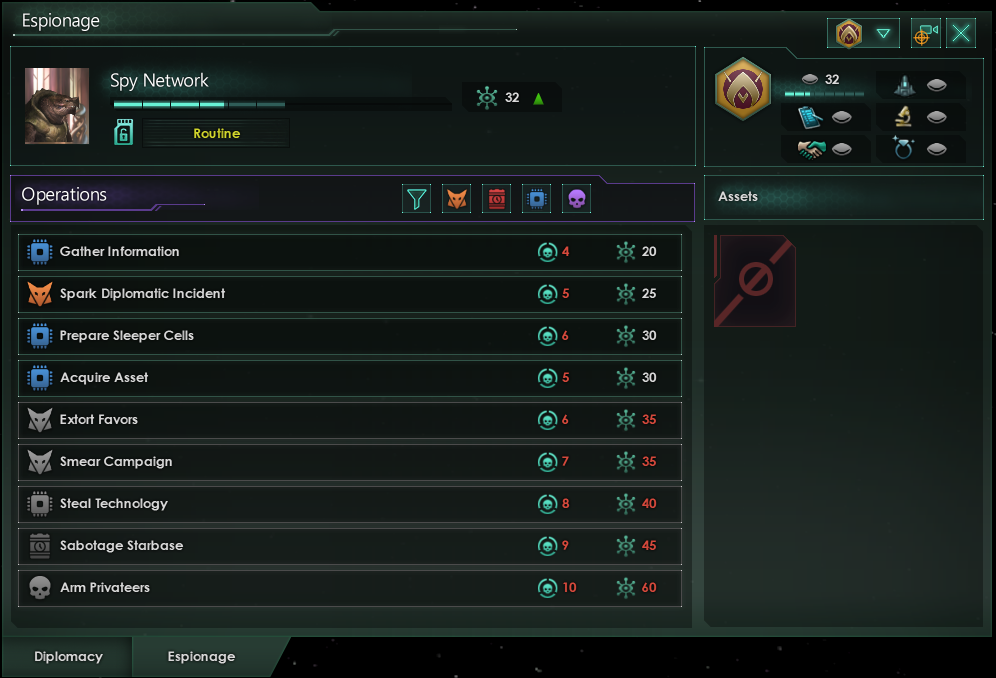
The refined Operations UI. Envoy on the top left, Infiltration Level (current/max) as progress bar & value. Intel categories in the top-right.
We've streamlined the Operations UI significantly, reducing the sheer amount of numbers associated with a network and the Operations themselves. As part of this streamlining, we've removed the concept of spy power and bandwidth, so it's no longer possible to run multiple simultaneous Operations on a single Empire simultaneously - you'll have to run them one at a time. This change also alleviates a problem we had where it wouldn't always be immediately perfectly clear which mission random events were affecting, so the "mental burden" of running Operations is lower.
Upon completion, Operations will now almost always cause a significant hit to Infiltration to represent lost contacts and heightened security. Operations also used to have varying difficulty per chapter - we've standardized them so we can now list the Operation difficulty on the UI, and let you know if you have an Asset that is especially good at this one.
First Contact Update
Although not much has changed with the system itself since we first showcased it in dev diary #193, there’s still some changes that can be interesting to see.
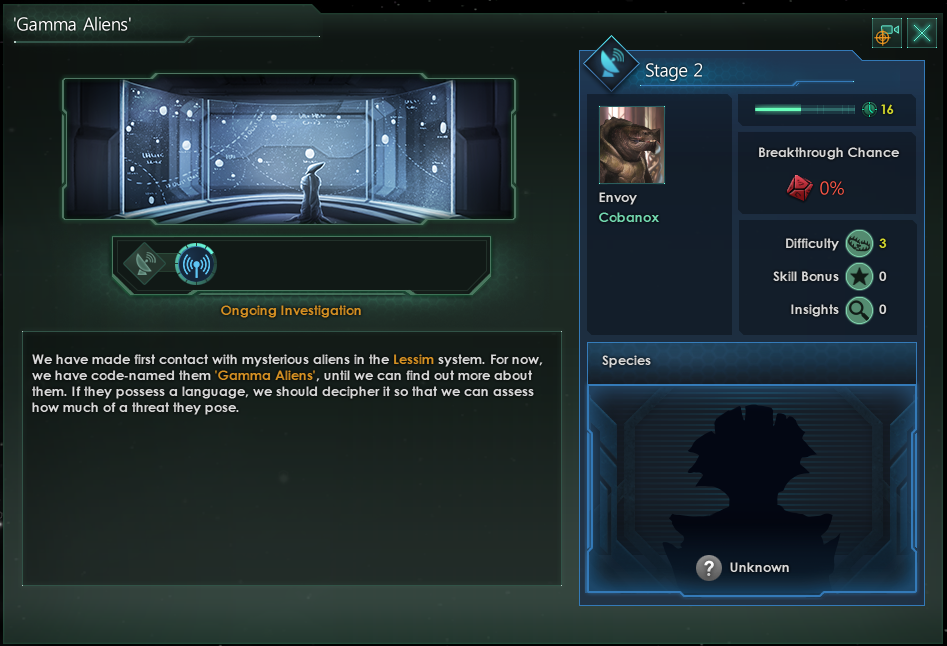
The finished first contact UI. The silhouette in the bottom-right is supposed to be generic, and will reveal a portrait once you’ve progressed far enough into the first contact chain.
Early hostilities can now lead to pre-contact conflicts as well. If you anger a neighboring alien civilization, there’s the chance that they will come and visit you.
More aggressive empires like fanatic purifiers or devouring swarms are also less likely to take your encroachment into their lands very kindly early on.
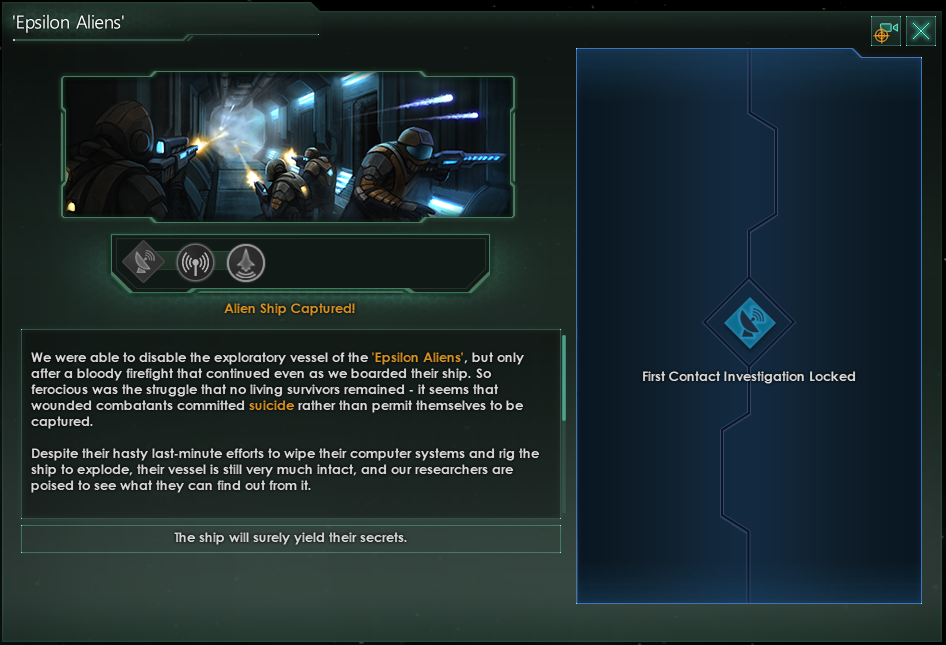
Abducting aliens is no longer a risk-free undertaking.
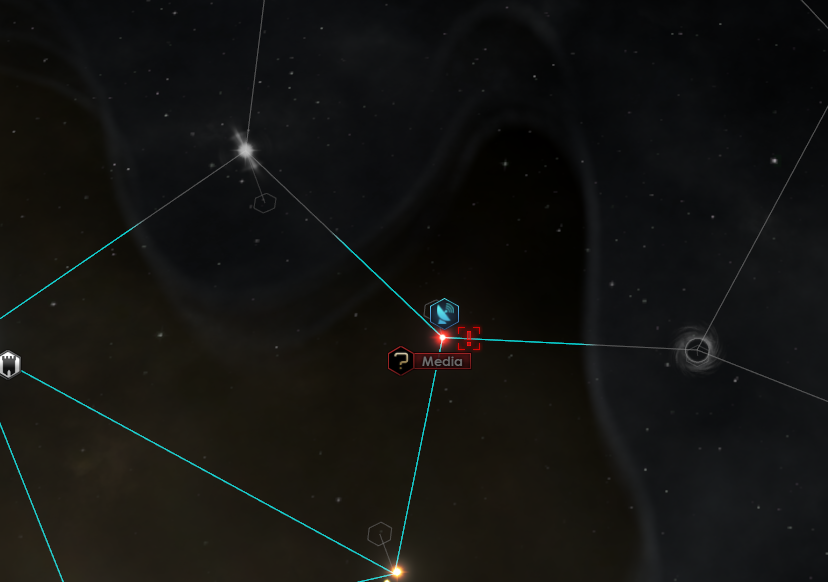
It seems like they weren’t too happy about our abductions…
Outliner Update
We’ve added some small quality-of-life improvement to the outliner. One of these improvements lets you reorder planets in the outliner.

Planets will be reordered within the sector listing or planet listing, depending on which option is active.
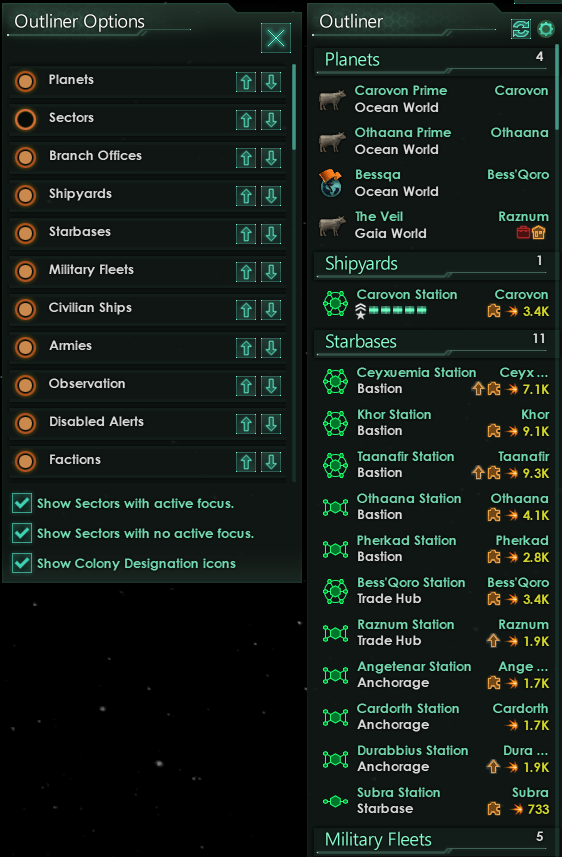
The outliner can also be toggled to show the icons for the designations instead of the icon for the planet class.
With these two options it's now possible to list all your planets as you wish, and to show the designation icons. Our product manager, Simon, can now finally list his Mining 01, Mining 02, Mining 03 etc. planets in the correct, and fanatically organized, order.
---------
That’s all for this week folks! I hope you’re as excited for the upcoming Nemesis release as we are!
I hope the word about the release date for Nemesis has already reached you, but in case it has somewhat eluded your perception, here is a refresher:
Nemesis will release on April 15th, and here is the second story trailer:
https://www.youtube.com/watch?v=o86MFZPb_WI
As per usual, our expansions are released together with a significant free update, and this time is no different!
We’re happy to announce that Nemesis will release together with the 3.0 ‘Dick’ Update on April 15th! The update is of course named after author Philip K. Dick, famous for works which inspired, among other things, movies like Blade Runner and Total Recall (which also happens to be one of my favorite movies!).
Why 3.0?
We felt that the changes introduced with the new Intel system and the reworked First Contact system has enough impact on how different the game feels to warrant the change. Early- and mid game feel quite different now, in a very positive manner. Alien empires feel so much more mysterious, and charting the entire galaxy is no longer so easy. Changes like the pop growth system and the addition of industrial districts also felt impactful enough to want us to make the change.
Going forwards, we’re also gearing up to be able to be a bit more agile and deliver updates to the game a bit more frequently. I don’t want to make any grand promises quite yet, but 2021 is looking to be a very good year for Stellaris!
3.0 ‘Dick’ Features:
- New Intel system
- Reworked First Contact
- Reworked Pop Growth
- New Industrial Districts & some changes to production of Alloys/Consumer Goods
- New Espionage system & Gather Intelligence Operation (other Operations will be a part of Nemesis)
- Numerous bug fixes & improvements
Espionage Update
The Espionage system has undergone some changes since the Dev Diaries that previewed them. Based on playtesting and qualitative feedback, we simplified a few of the systems that seemed to be adding unnecessary complexity or were difficult or awkward to understand. The way Encryption, Decryption, and Counter-Espionage all interacted were one of these points of frequent confusion, so we decided to scrap Counter-Espionage entirely, renamed Decryption to Codebreaking, and apply standardized rules when using them:
Encryption is always used as "Espionage Defense"
Codebreaking is always used as "Espionage Offense"
In earlier iterations, which modifier was being referenced varied based on the exact circumstances, which muddled the stats a bit and made it difficult to tell which one would help you more when you're attempting to infiltrate an empire. We renamed Decryption in order to further reduce confusion. Relative Encryption is used often in the system, and will now always compare the "offensive" Empire's Codebreaking with the "defending" Empire's Encryption.

Relative Encryption tooltip. In this example, our Codebreaking is lower than their Encryption and their Codebreaking is higher than our Encryption.

The refined Operations UI. Envoy on the top left, Infiltration Level (current/max) as progress bar & value. Intel categories in the top-right.
We've streamlined the Operations UI significantly, reducing the sheer amount of numbers associated with a network and the Operations themselves. As part of this streamlining, we've removed the concept of spy power and bandwidth, so it's no longer possible to run multiple simultaneous Operations on a single Empire simultaneously - you'll have to run them one at a time. This change also alleviates a problem we had where it wouldn't always be immediately perfectly clear which mission random events were affecting, so the "mental burden" of running Operations is lower.
Upon completion, Operations will now almost always cause a significant hit to Infiltration to represent lost contacts and heightened security. Operations also used to have varying difficulty per chapter - we've standardized them so we can now list the Operation difficulty on the UI, and let you know if you have an Asset that is especially good at this one.
First Contact Update
Although not much has changed with the system itself since we first showcased it in dev diary #193, there’s still some changes that can be interesting to see.

The finished first contact UI. The silhouette in the bottom-right is supposed to be generic, and will reveal a portrait once you’ve progressed far enough into the first contact chain.
Early hostilities can now lead to pre-contact conflicts as well. If you anger a neighboring alien civilization, there’s the chance that they will come and visit you.
More aggressive empires like fanatic purifiers or devouring swarms are also less likely to take your encroachment into their lands very kindly early on.

Abducting aliens is no longer a risk-free undertaking.

It seems like they weren’t too happy about our abductions…
Outliner Update
We’ve added some small quality-of-life improvement to the outliner. One of these improvements lets you reorder planets in the outliner.

Planets will be reordered within the sector listing or planet listing, depending on which option is active.

The outliner can also be toggled to show the icons for the designations instead of the icon for the planet class.
With these two options it's now possible to list all your planets as you wish, and to show the designation icons. Our product manager, Simon, can now finally list his Mining 01, Mining 02, Mining 03 etc. planets in the correct, and fanatically organized, order.
---------
That’s all for this week folks! I hope you’re as excited for the upcoming Nemesis release as we are!




